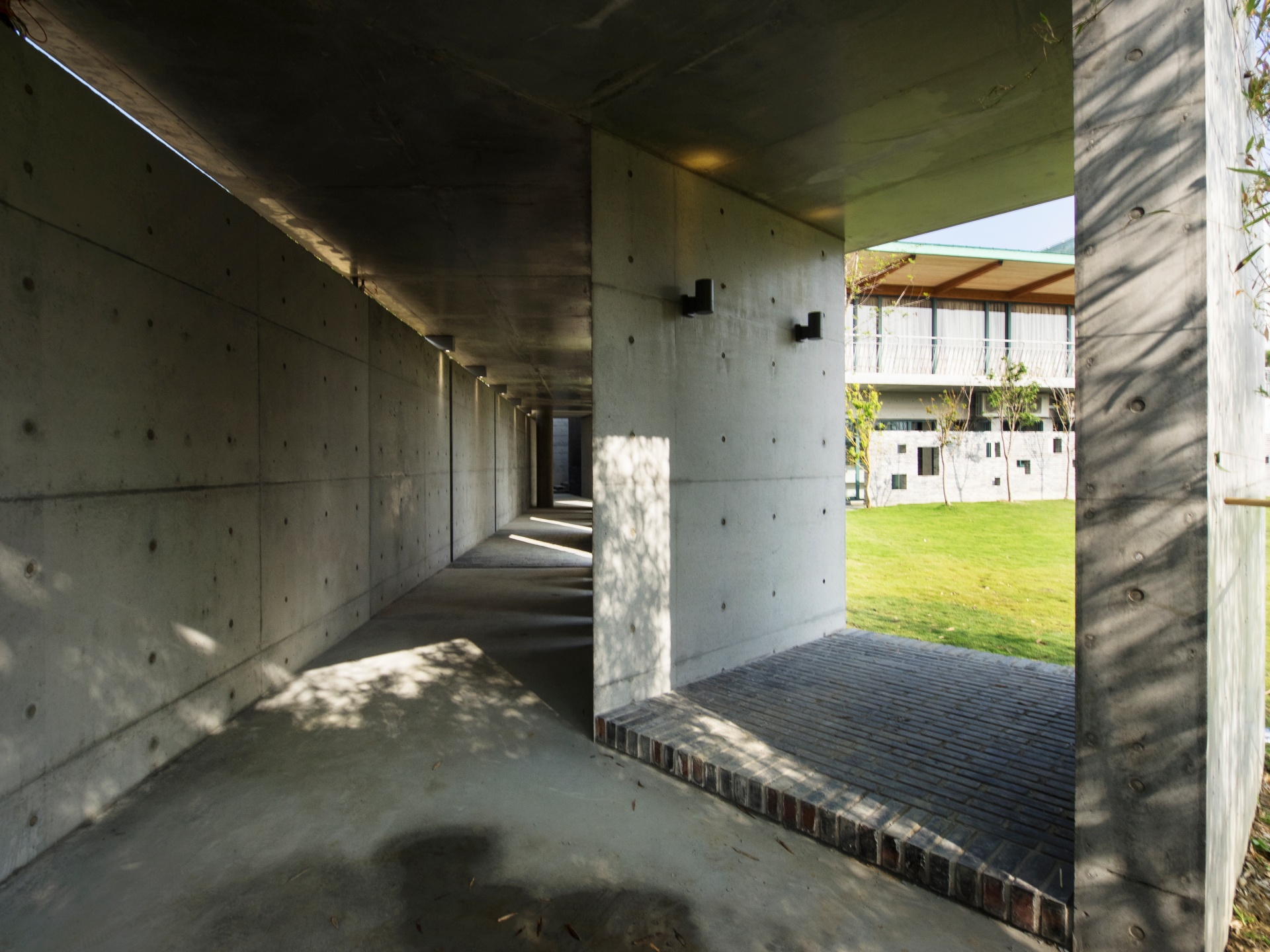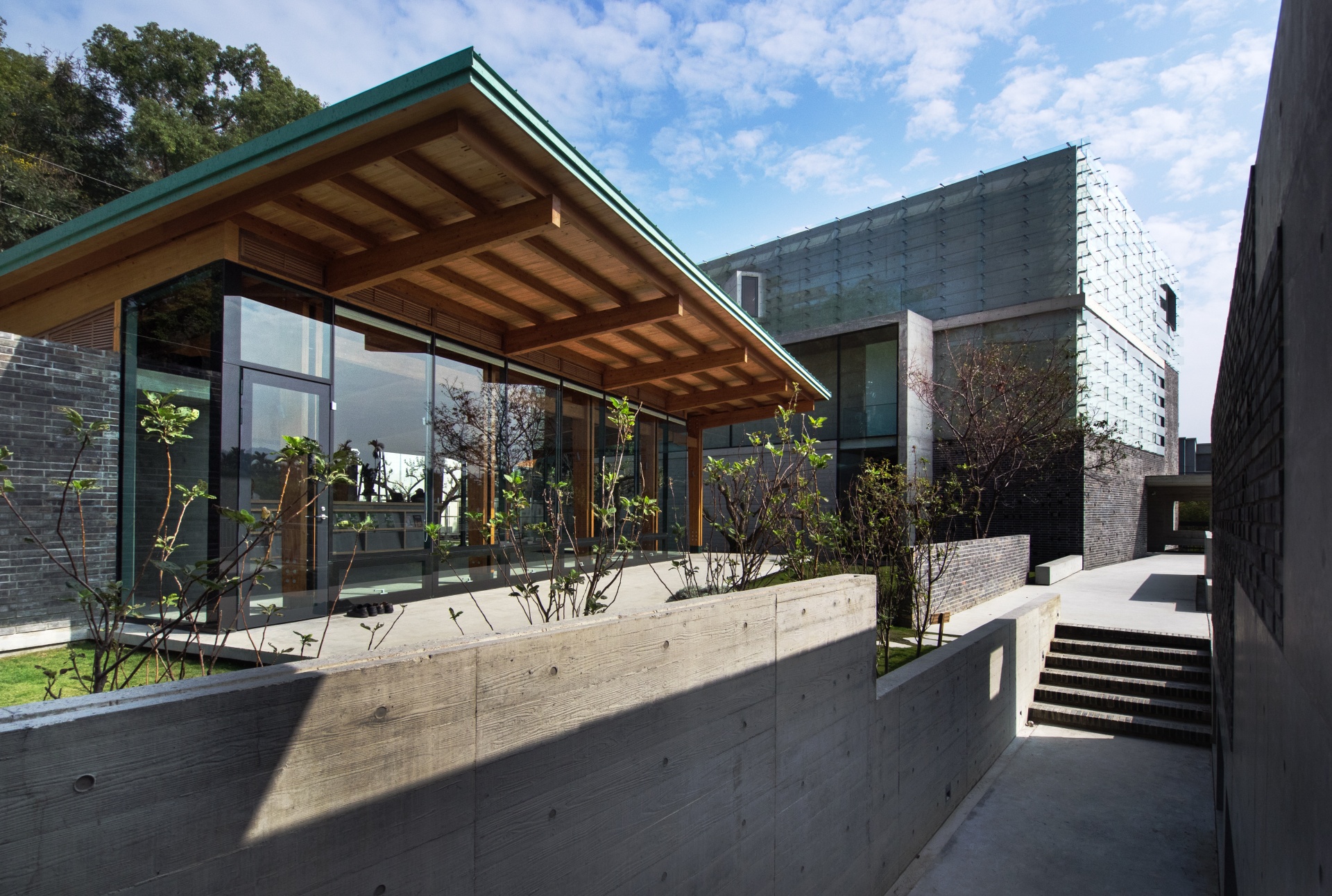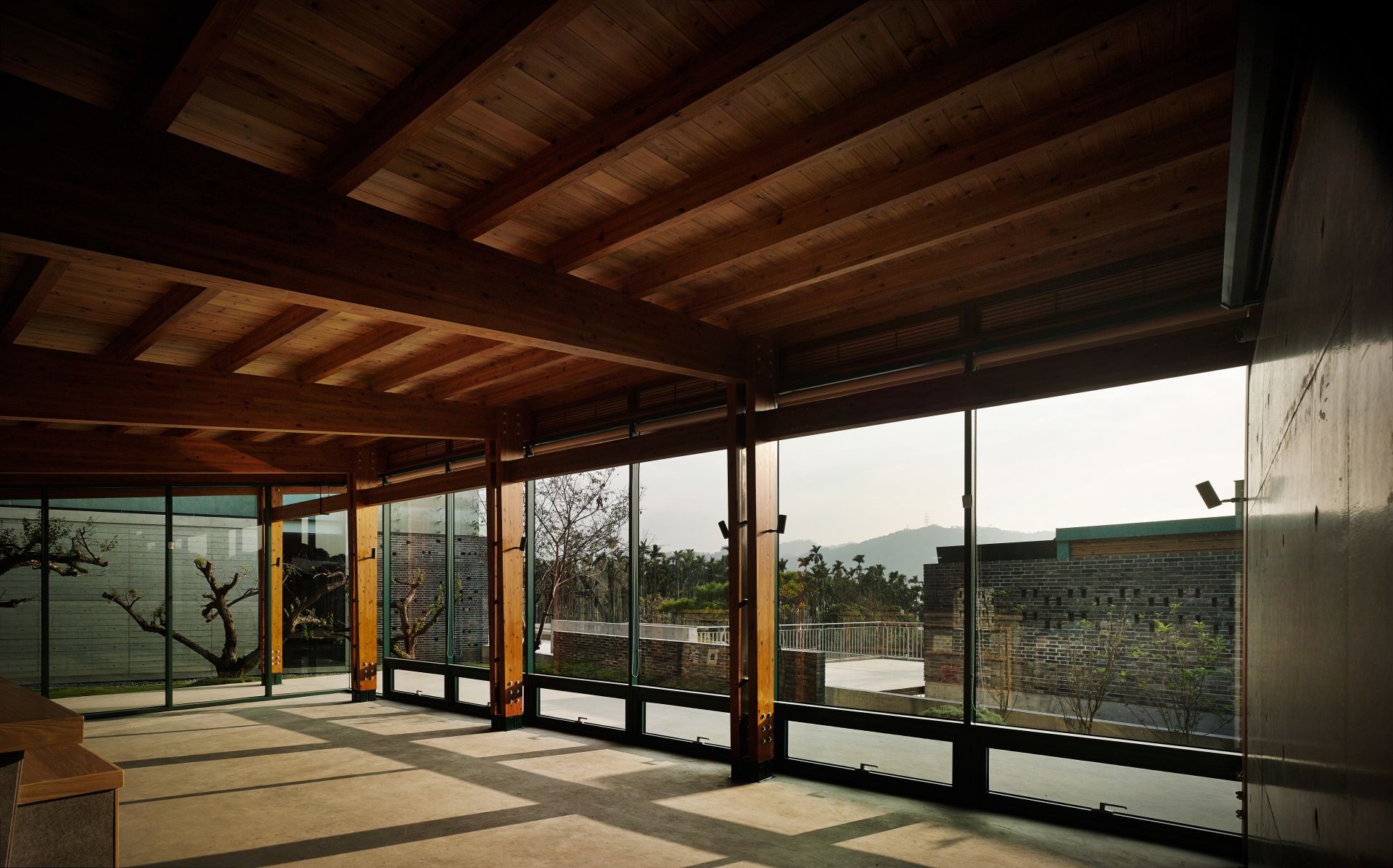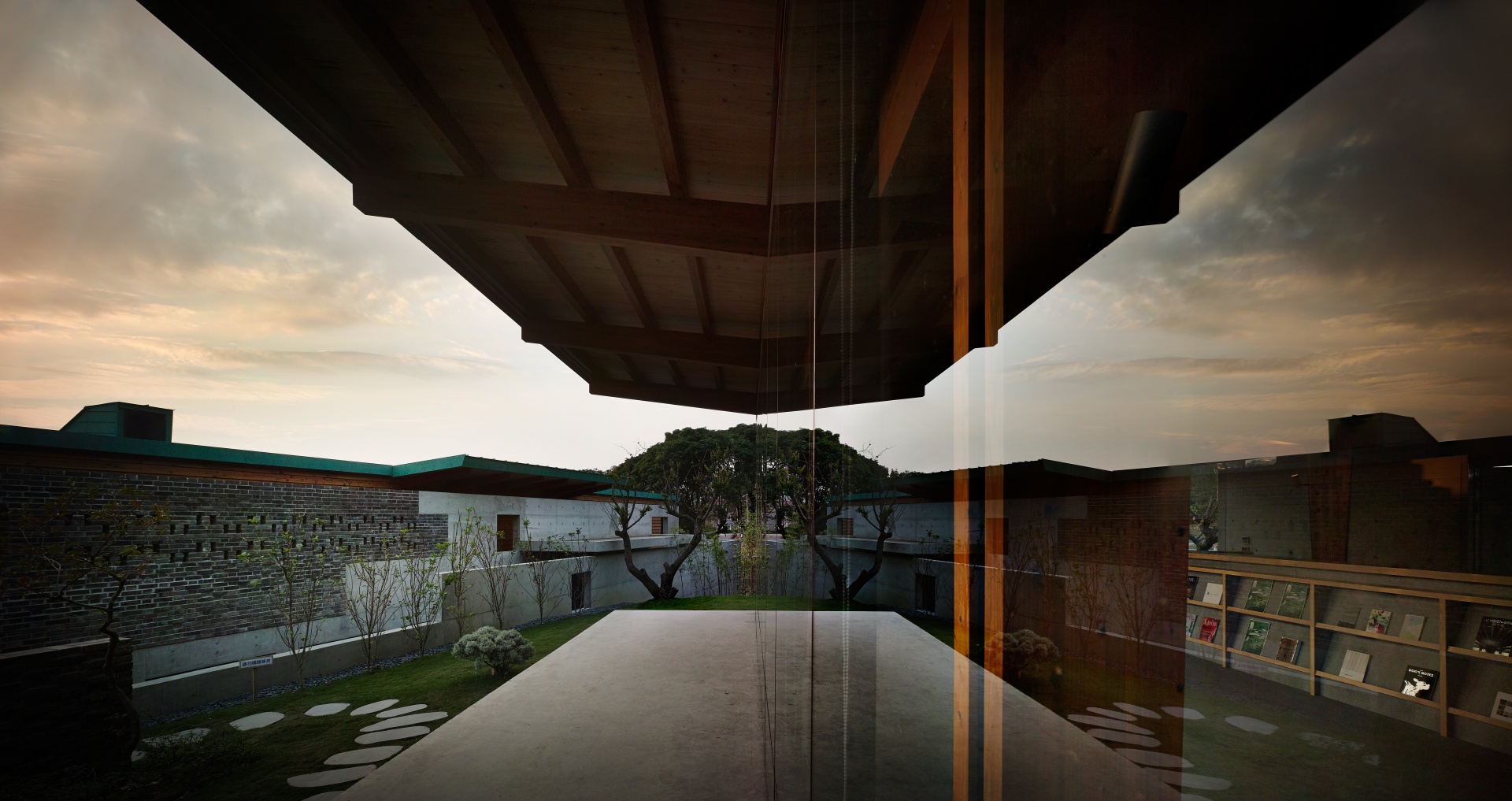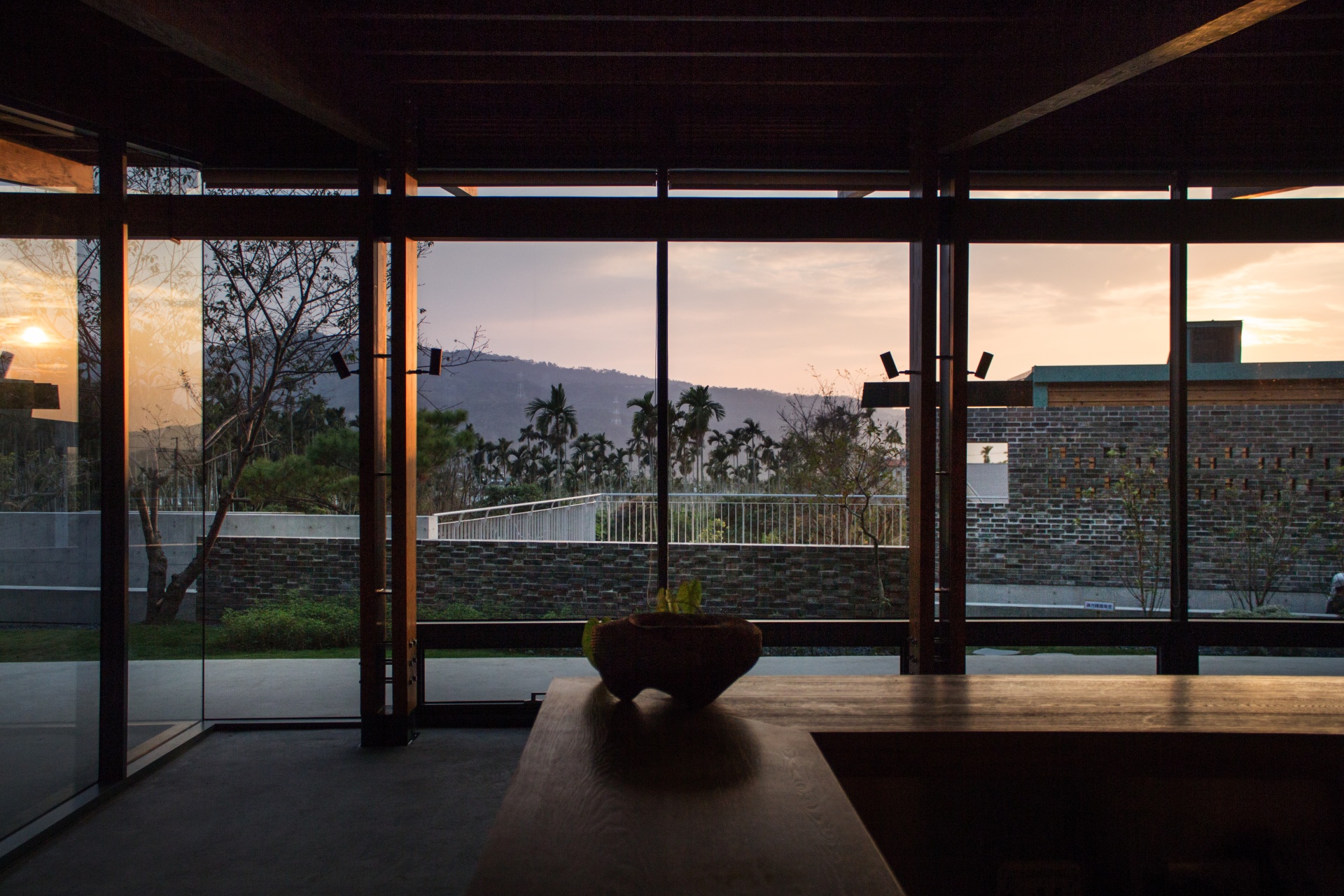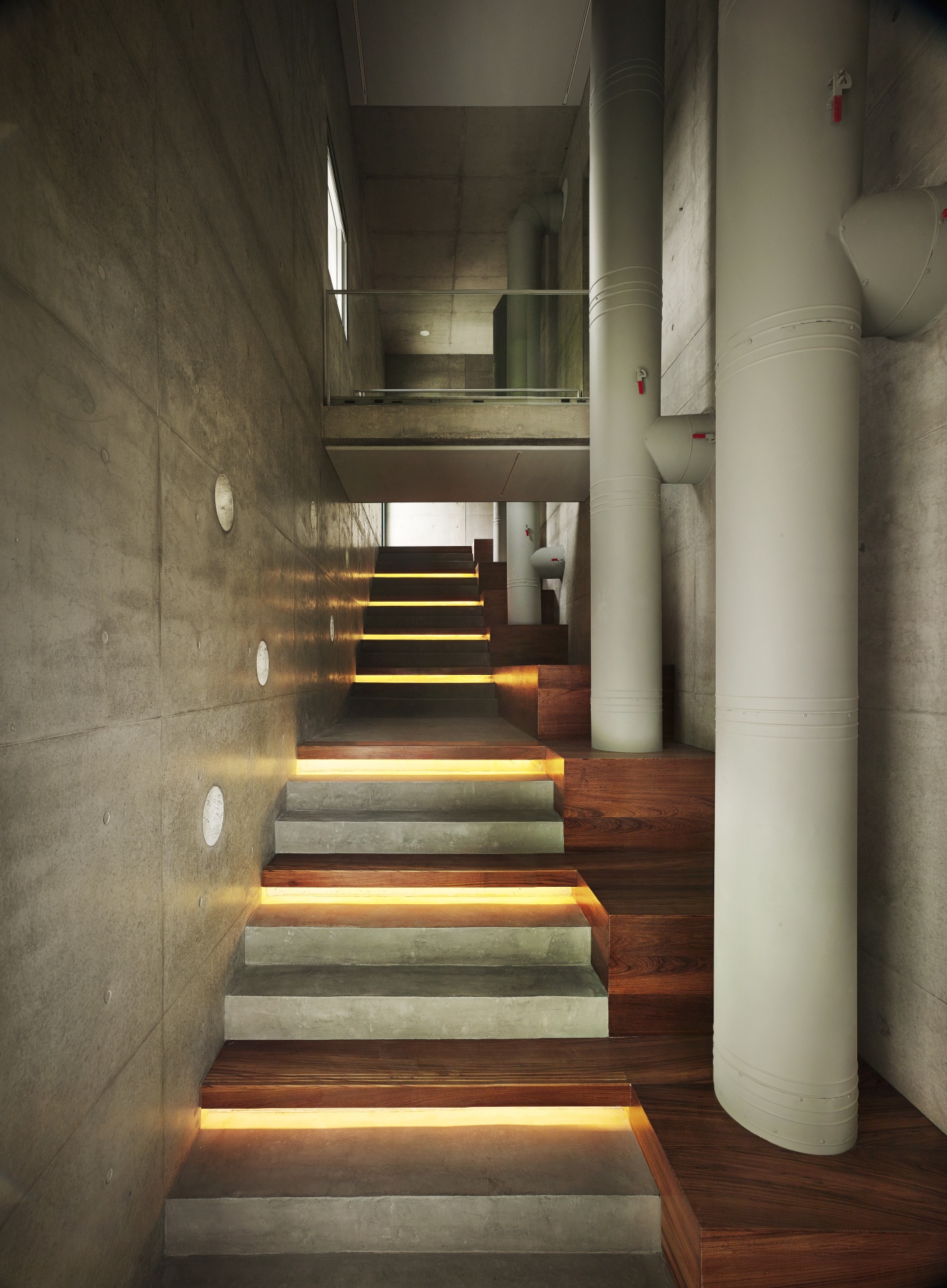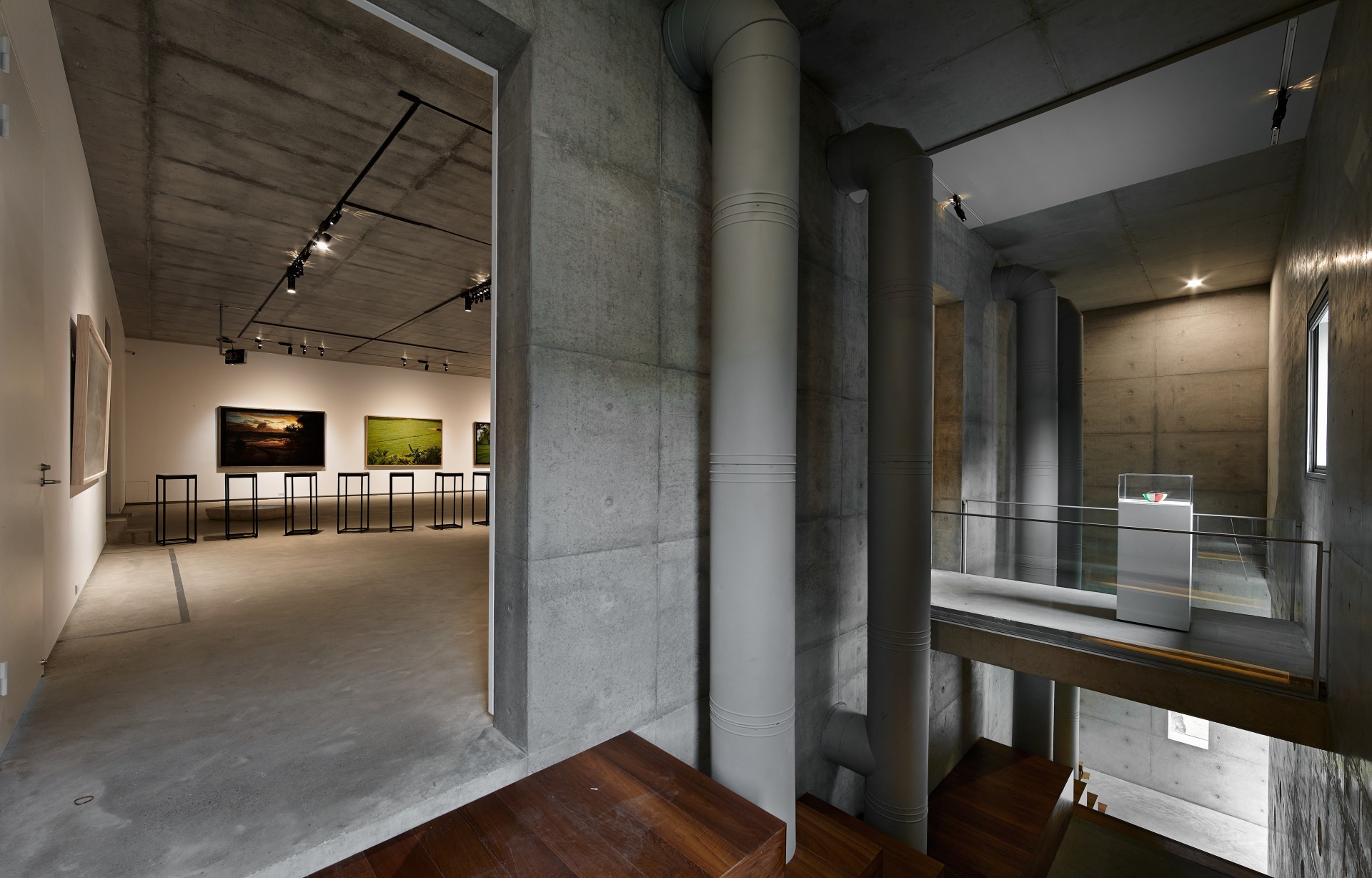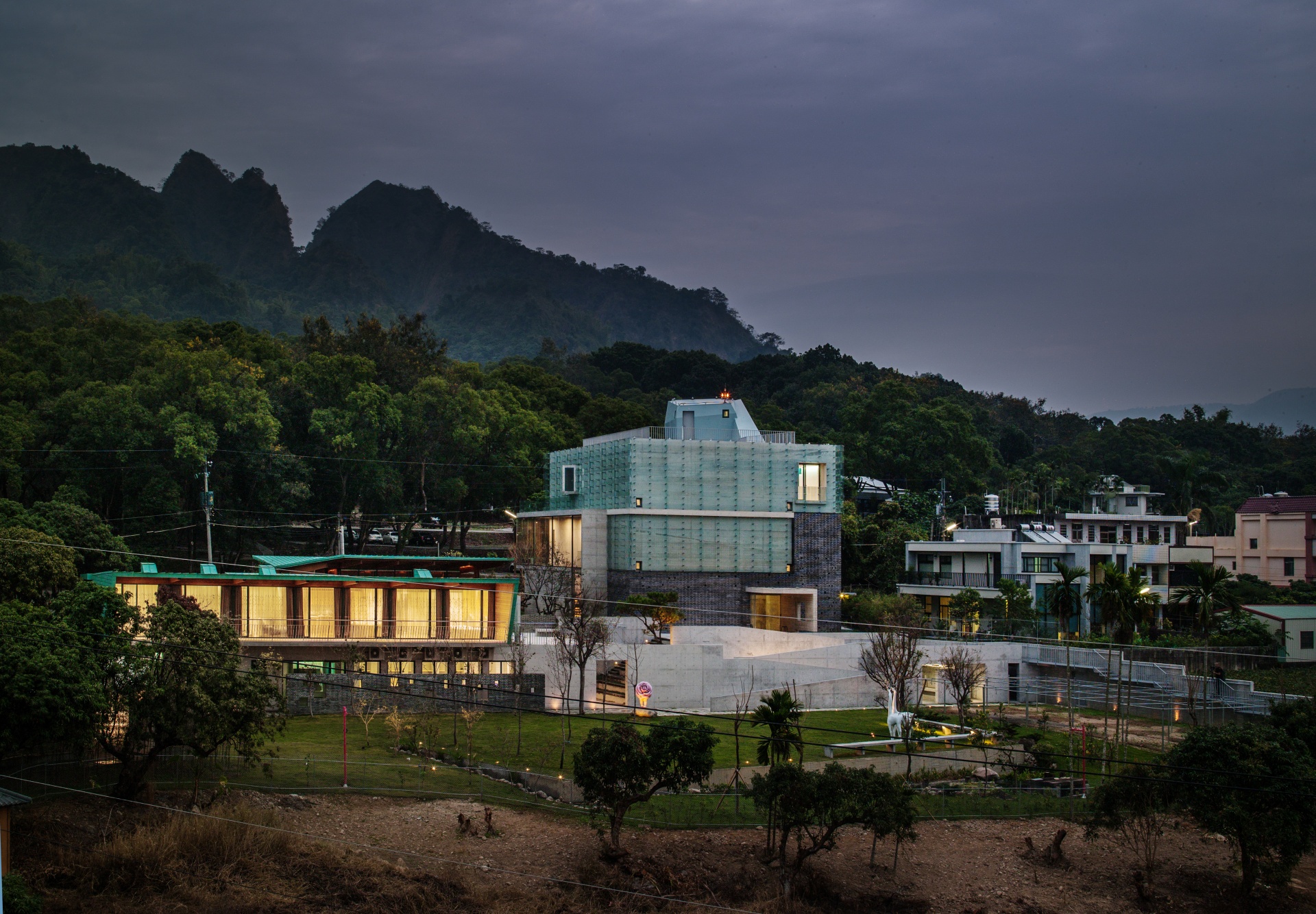
Yu-Hsiu Museum of Art
Settled in Pinglin Village, Nantou County, next to 99 peaks Forest Trail, Yu-Hsiu Museum of Art is an example of how nature and topography can symbiosis with an architecture design. The design maintains the original landscape to the greatest extent, as focusing on the earthwork balance to avoid redundant intervention, as well as protecting the original species on the base, especially the original vineyards in front of the site.
The design intended to continue the pleasant scale of surrounding settlements and alleys, and organic integrated with the local community. With profound consideration of local conditions and functional requirements, the museum configuration is divided into three independent units: the exhibition hall, the restaurant, and the holiday school. Due to the 7-meter height difference of the terrain, the three independent units connected by alleys produces a well-organized, natural and organic rhythm. An ecological pool is sited at the lowest part of the terrain, which has the functions of water storage and micro-climate adjustment.
The museum is inspired from both the planning concept of traditional Chinese Garden ("block first, guide second, and the third is to link and connect"), and the spontaneous form of Pinglin Village settlement texture. The entrance of the museum is guided by the semi-outdoor promenade and natural plants, facing unexpected turnings, entering narrow alleys, and encountering walls. The light and natural green are intertwined and contrasting, which lengthens the space in-between outer world and inner art world. With the change of scenery step by step, the visitors slow down the pace, settle down the mood, totally immerse into the environment of harmony and finally they travel to the exhibition hall.
The exhibition hall has double-layered exterior walls, contains a basement and three floors above ground, as the reinforced concrete structure on the inside, and multiple materials with light green clear glass on the outside, creating a dialogue with the surrounding environment, as well as forming an air-flow heat insulation layer with the inner structure. The light green clear glass reflects the views of the four seasons in Pinglin, blurring the museum volume into the environment. When mist wreathed the hills, the museum seems to fade into the surroundings, looming with the fog. The variation of nature endows the museum with meaning and vitality.
The surrounding alley extends spontaneously and finally reaches the vertical corridor inside the exhibition hall. The building frames various surrounding sceneries, which allows indoor and outdoor spaces to be constantly alternating, entangled and extending. Nevertheless, the boundaries between the building and the surrounding environment are blurred, therefore enrich the spatial experience of visiting the art gallery.
The roof is an extension of the terrain where a steel-structure folly is placed. The folly shows not only the owner‘s intuition of building this museum, but also provides the most suitable view for the magnificent beauty of the 99 peaks. After browsing through artworks, and walking into the folly, the shock from nature comes unexpectedly. In this unique space, on the one hand, visitors can marvel at this wonder of the nature through the window, and on the other hand, they can recall all the fine arts that have viewed throughout this journey. The folly becomes the place for the dialogue between man and nature.
| Awards |
|
|---|---|
| Category | Public |
| Location | Nantou |
| Completion | 2016 |
01 / 10
